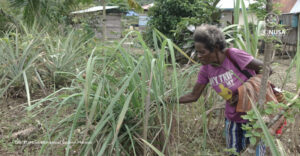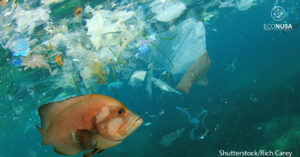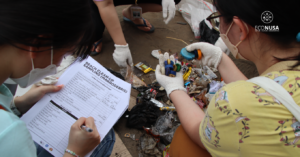
Mangrove forest area in Air Besar and Pager Kindik Villages, Fak-Fak Regency, is hardly intervened by human at all. The area is still dense and beautiful. Unfortunately, there are only few people making use of the mangrove ecosystem resources.
Only around two or three people take advantages from mangroves in Air Besar Village for fish and crabs around the area. Moreover, mangrove resources in Pager Kindik Village in North Warbea District are not utilized at all by the surrounding community.
Both villages rely solely on nutmeg cultivation given the fact that nutmeg is more economically valuable to local people because the price per kilogram reaches IDR50,000. Meanwhile, people in the Air Besar region, which is administratively very close to Fak-Fak Regency, has been aggressively utilizing forest products in the form of nutmeg seeds for sale.
On the other hand, the condition of mangrove forest area in Pager Kindik, which is close to the inter-village road access, has started to decline as from several hectares plot of areas. Now the area has been drastically reduced due to the inter-village road access project that passes through some parts of the mangrove forest area. Worse still, local people take the rocks in the area.
The lack of utilization of the mangrove forests resources is due to some reasons. According to two village chiefs of Air Besar and Pager Kindik, they lack the information about mangrove and its benefits. They rarely get any training on mangrove provided by related parties in community development and empowerment. Whereas, both villages actually need community development and empowerment in the near future.
Socialization about the use of mangrove ecosystems in Air Besar and Pager Kindik Villages is insufficient as it similarly happens to Kambala Village in Kaimana Regency. The community also lacks knowledge about the potential and benefits of mangrove forests. As a result, the two regions only utilize nutmeg as the only commodity for their daily livelihood.
This is very regrettable fact considering that West Papua has a large mangrove area. This province has a vast mangrove area or 69 percent of the total mangrove areas in Indonesia. Mangrove areas in a healthy condition are spreading along the southern coastal region of West Papua. Kambala, Air Besar, and Pagar Kindik Villages are in the coastal path here.
Having observed this condition, all parties, especially the government, the community, and non-governmental organizations should intensify their concern to mangrove ecosystem in the Papua region. Mangroves will provide prosperity to the surrounding community only when they know the management and sustainable use of mangrove forests.
Editor: Leo Wahyudi S.




